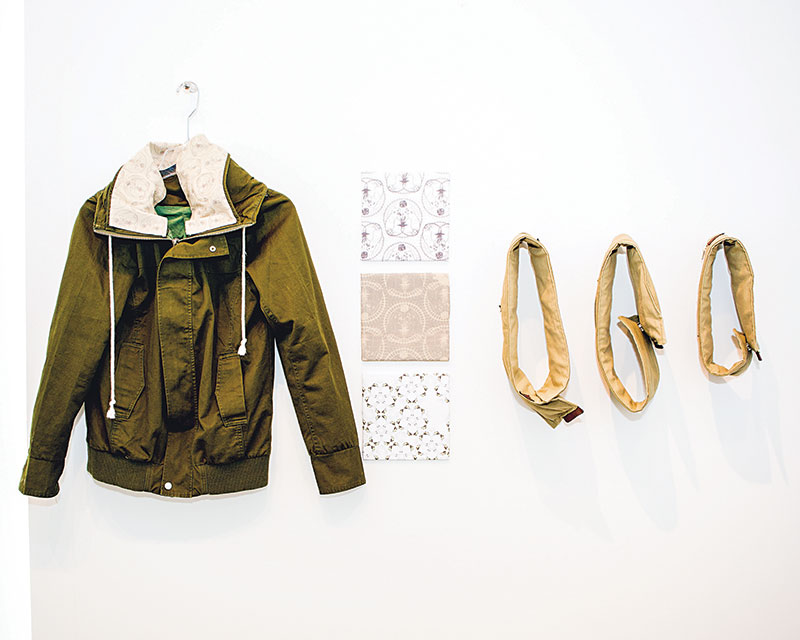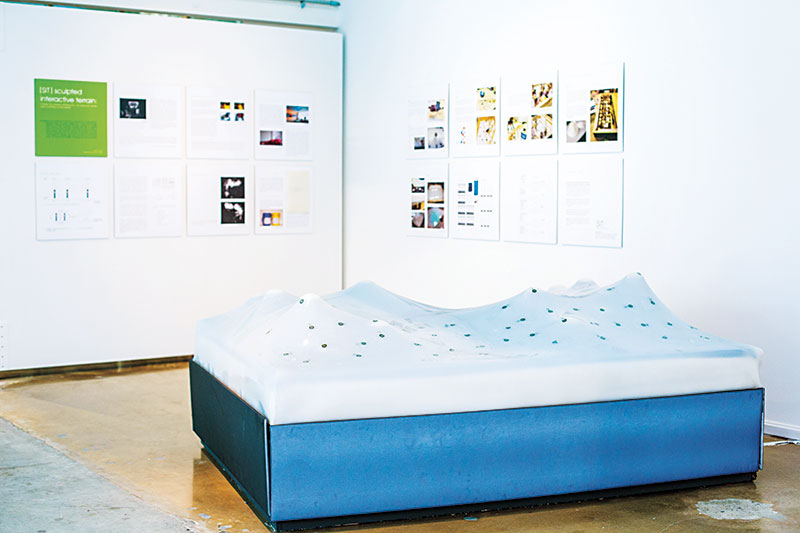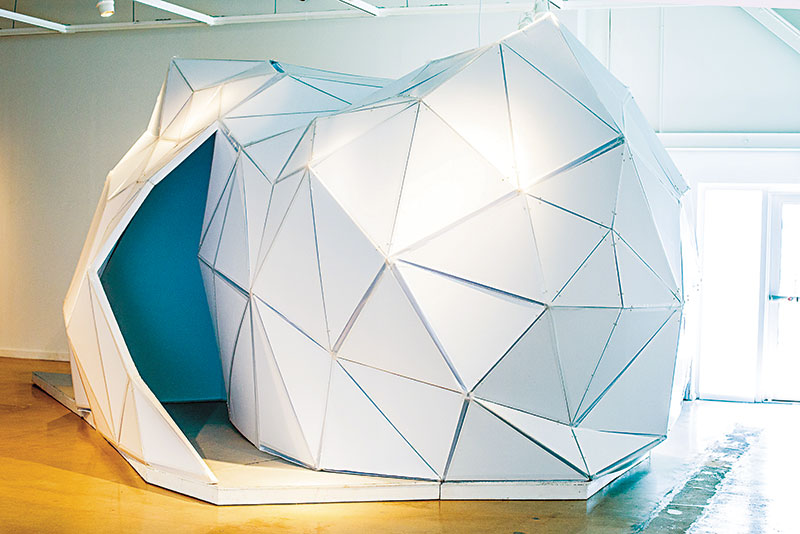Memory Prosthetic
Memories can be fleeting, unreliable and sometimes entirely inaccurate. In her exhibit, Sarah Moores proposes a wearable recording device that responds to dramatic physiological responses by documenting the period of time when those changes are occurring. The wearable system is paired with a one-person pod that replays the recorded audio via a Bluetooth connection, allowing the user to relax and reflect upon the events documented—things that might include missed information, conversations, unusual circumstances and unexpected moments. Moores believes such a system will “improve our sense of well being by allowing us to be more aware of those things leading to emotional, physiological and psychological reactions,” subsequently improving attention and fostering better long-term organic memories.
Tour the Design Futures Lab exhibit with program manager Nicole Koltick.
“I see technology becoming more integrated with our physiological systems, allowing us to maintain a healthy life by making us more aware of ourselves and our environments.”
— Sarah Moores
“Soon our clothing will become part of our networked self, able to send and receive information about our bodies and the environment. ‘Deviant Wear’ explores how this technology gives us new opportunities for self expression and customization of our physical and virtual world.”
— Kim Brown
Deviant Wear
Kim Brown combined wearable technology, environmental sensors and “sensory graffiti” to guide walkers to urban areas off the beaten path. A hoodie or jacket embedded with haptic feedback devices vibrates and heats a right or left sleeve to guide users to a wireless beacon embedded in wheat paste graphics (depicted on the opening page) placed in out-of-the-way urban locations. Brown used the abandoned Ninth National Bank and Industrial Trust Savings Co. at 1942-1958 N. Front St. in Philadelphia’s Kensington neighborhood as the test site for the project. Once the walker is within proximity of the graphic, the beacon triggers an audio signal that is then transmitted via Bluetooth and played through speakers embedded in the garment’s collar or hood.
Sculpted Interactive Terrain
Biofeedback mechanisms allow this specially designed bed by Katie McHugh to dramatically respond to a sleeping person’s movements, positions and nighttime habits. Using information from sensors embedded in a silicone surface layer, internal pillars raise and lower, allowing the bed to alter its shape to accommodate changes in sleep patterns and sleeper behavior. For example, if a member of a couple is talking in her sleep, the bed can change shape to roll her away from her partner. Imagine also the bed’s potential to protect small children against sleeping hazards such as Sudden Infant Death Syndrome by detecting breathing difficulties, then automatically rolling a child into a safer position and alerting parents.
Technology at the Threshold
In a world of pervasive technology, Megan Mitchell’s giant seashell represents a transitory space between the overly digitized “global” environment and domestic life. This redesigned home entryway allows users to experience four sensory stages designed to provide a refreshing experience that re-orients them to the present time and life in the home. Upon entering, a user is greeted with slowly brightening ambient light that shifts to a warmer shade based on the number of people in the home. After passing through a refreshing air wash of cleansing oxygen, the individual can then take a seat, initiating a “network phase break” that cuts off all media connections, dims the lights and initiates a softly glowing pattern above and across from the seat. Upon rising, the lights fade up, then back out as the person exits the space, during which media and communication synch to local surroundings and provide updates on family members in the home.
Emotional scent communication
While it’s known that scent is a powerful memory trigger, using scent for actual communication is rare. Laura Nejman proposes a device — an emotional scent messaging machine — that uses a fully customizable vocabulary of scents to create a deep impression on emotion and memory. Individual “keys” on a multicolored, blob-like “touch form” allow the user to send specific messages tied to a scent combination—for example, a mixture of vanilla and ginger might represent love, admiration and desire to let a loved one know you’re thinking of her. The scent messages are delivered through a sculptured wall installation — the scent form — which contains the scent motors and a delivery fan.
Synthetic Biology
Who knows what nastiness lurks on the food we buy or the countertops we think are clean? It’s not like they can tell us, right? In the future according to Tashia Tucker, they might just be able to. Her project delves into the emerging field of customizable bacteria and suggests three potential uses: adaptive wall coverings that filter air and control privacy; flooring that detects the presence of dirt and pollutants and absorbs contaminants; and countertops that detect whether pesticides, allergens and harmful bacteria are on your food or if the food was genetically modified or cultured in a lab.
“In the near future I imagine that the increasing need to check the constant flow of digital information will inspire the creation of spatial thresholds like this one that provide release and relief from the attention-grabbing demands of digital connection and allow for a more present and personalized transition from one set of experiences to another.”
— Megan Mitchell








